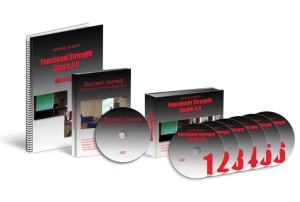Radial tunnel syndrome is rare, it is challenging to differentially diagnose and can be a monster to manage. If you have a recalcitrant case of tennis elbow then this post will interest you! This article discusses the best available evidence for assessment and management of radial tunnel syndrome.
In This Episode In this episode of the podcast I continue the interview with Paul Wright. In Part 2, of the interview we discuss: The 4 most successful and easy to implement external marketing strategies How to overcome barriers to implementing these successful strategies 5 of Paul’s business failures and what he learnt from them Why […]
 TSP011: Health Business Success with Paul Wright (Part 2) [ 28:45 ] Play Now | Play in Popup | Download
TSP011: Health Business Success with Paul Wright (Part 2) [ 28:45 ] Play Now | Play in Popup | DownloadIn this episode of the podcast I interview Paul Wright. Paul Wright is a physiotherapist and business consultant. He graduated from his first degree, as a Physical Education teacher, in 1987 and then graduated as a physiotherapist in 1990. He has also completed an Advanced Diploma in Business Management. Paul has opened multiple multi-disciplinary health clinic and has been actively involved in clinical education around the world having lectured to over 20,000 health professionals…
 TSP010: Health Business Success with Paul Wright (Part 1) [ 45:04 ] Play Now | Play in Popup | Download
TSP010: Health Business Success with Paul Wright (Part 1) [ 45:04 ] Play Now | Play in Popup | DownloadIntroduction Sports physiotherapists regularly assess and treat shoulder pathologies. In my clinical practice, shoulders would place in the top 3 most common conditions (along with back and knee presentations). Given the frequency with which we see these problems, there is much interest in the best assessment and rehabilitation techniques for shoulder problems. This article will […]
Introduction Hamstring strains are commonly assessed and treated in the world of sports physiotherapy. They represent the most common injury in a number of sports, including AFL and soccer, accounting for up to 12-16% of injuries (Hawkins et al., 2001; Warren et al., 2010). Dvorak and Astrid (2000) suggested that hamstring injuries occur at an […]
You know what I’ve learned after talking to incredible sports physiotherapists and sports medicine professionals, attending numerous professional development courses, conferences and seminars and reading many books: there is so much that I don’t know. And I say that without reservation, as I know that it is impossible to stay at the forefront of current practice and research in all fields of sports medicine. There is just not enough hours in the day. Fortunately, I also know not to pass up opportunities to learn from experts in a given field. Thus, I would like to introduce you to Michael Boyle.
Something A Little Different: So, I have decided to do something a little bit different. I have invested some time into creating some videos for YouTube based on various diagnoses and pathologies that have been previously discussed on this site. I have done this for a few reasons, including to allow the blog/site to reach a greater audience, to assist or cater for those who prefer to watch or listen to information rather than read lengthy articles and also to allow physiotherapists and physical therapists to refer patients/athletes to the videos as a source of information, which can be consumed in their own time….
Can we get better results? The answer is yes. I am certain that following many physiotherapy or physical therapy treatments there is something else that could have been done or said that would allow the patient to get better results. Unfortunately, most physiotherapists do not have all day to spend with one patient, and are thus limited in what they can do. We just want to hope that we can efficiently deliver the best possible treatment or intervention in any given environment. This is why prioritising treatments and using Pareto’s Law can be quite important.
As sports physiotherapists we treat all sorts of patients that want to do crazy things. You know… run, swim and ride all day and even climb mountains and cliffs. Many of these athletes are young and physically active, and they strive to push their body to its physical limits. A well recognised condition to affect this group of people is chronic exertional compartment syndrome (CECS). In fact, eighty-seven percent of patients with CECS participate in sports, and runners account for 69% of these cases Thus, sports physiotherapists, particularly those that deal with endurance sports, will assess and treat this condition with considerable frequency. This article discusses new research on changing biomechanics to manage CECS.
Introduction With a name like that, all physiotherapists will remember this one! But how much detail is remembered? Have a quick think about how many wrist patients you see, compared to knee or back patients. If you are in a private practice/outpatient clinic with a demographic anything like mine you will be seeing mostly backs, […]
In the past this site has featured some lighter, colloquial blog posts. These articles discuss issues related to the greater physiotherapy community. Thus, I present a few mantras I have heard, adapted or made up for the physios to live by in the coming year.
Radial tunnel syndrome is rare, it is challenging to differentially diagnose and can be a monster to manage. If you have a recalcitrant case of tennis elbow then this post will interest you! This article discusses the best available evidence for assessment and management of radial tunnel syndrome.







